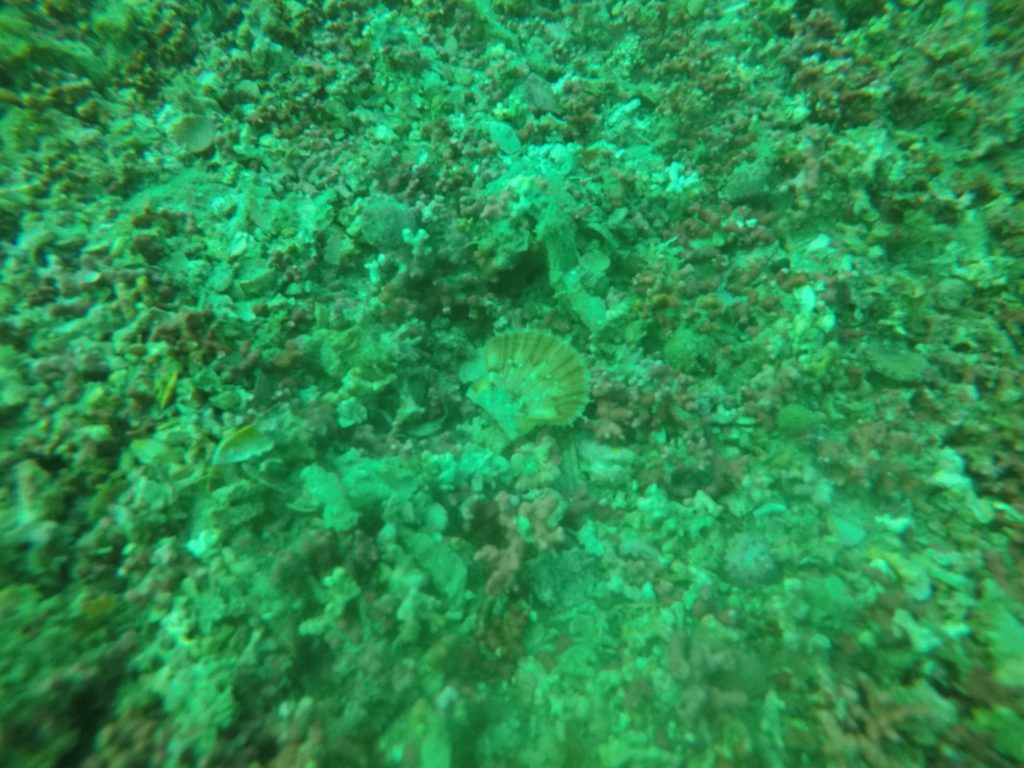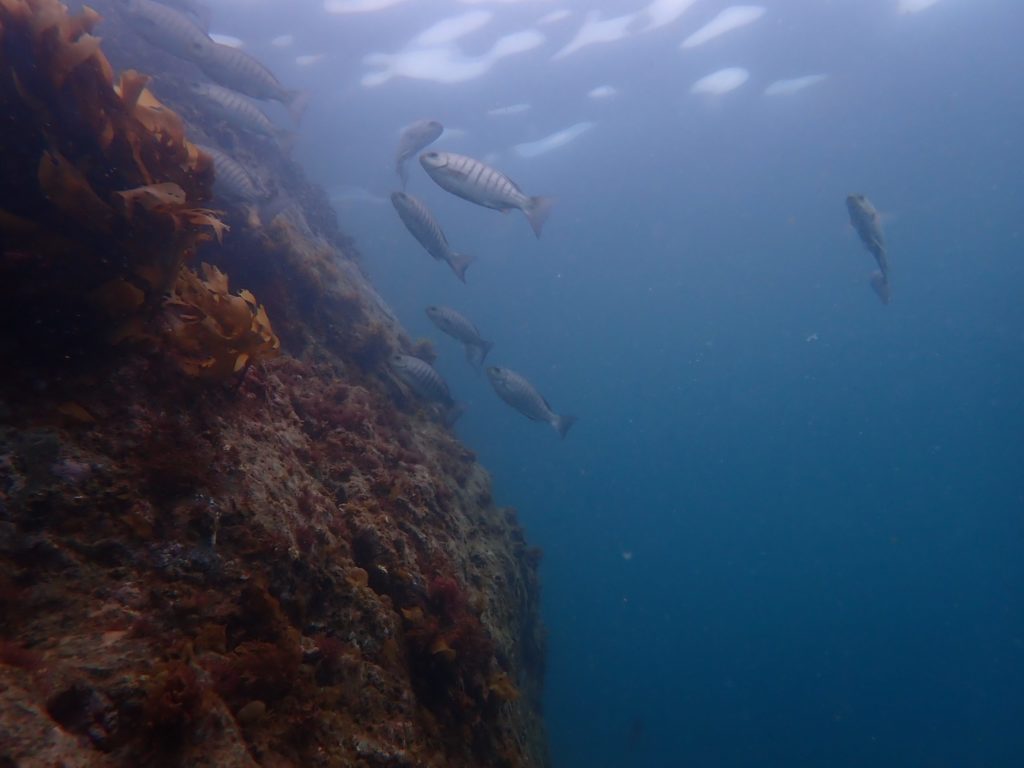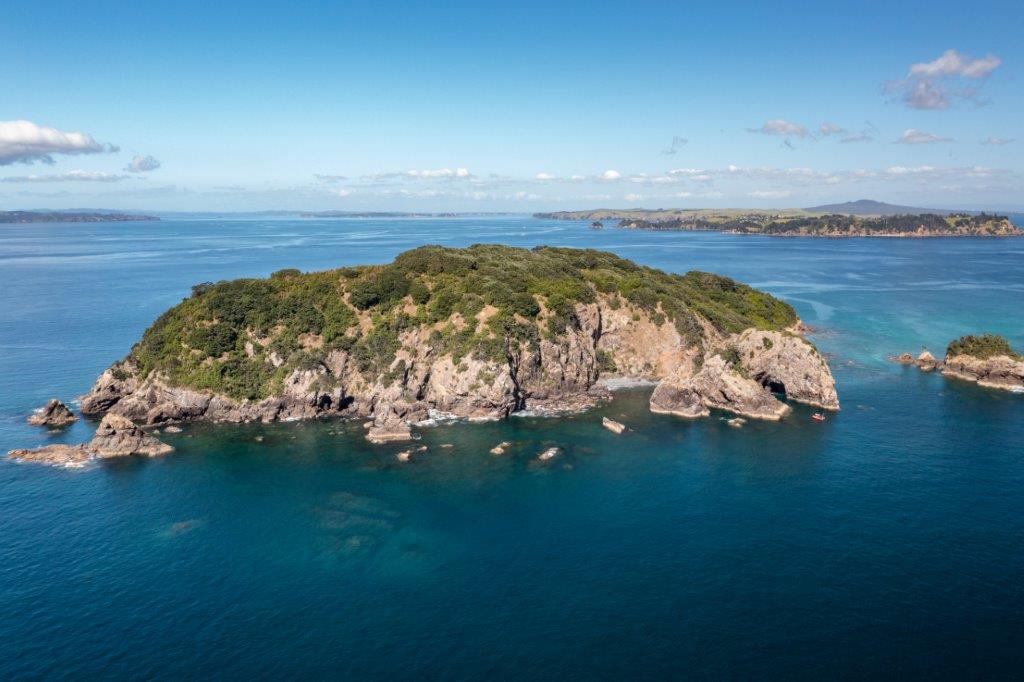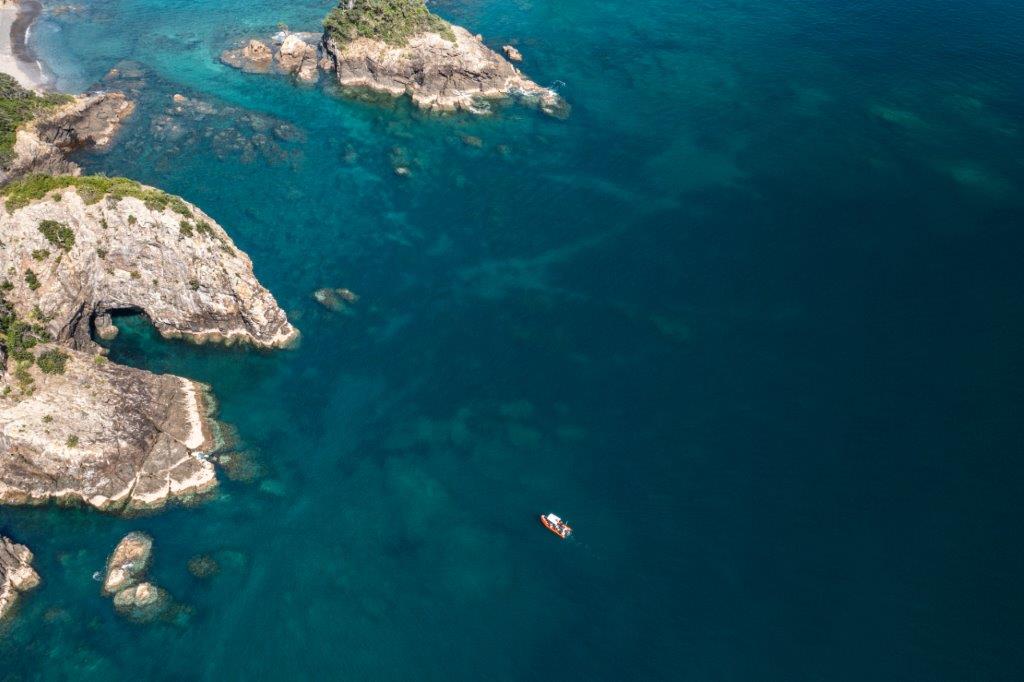The Noises hold a very special interest for seabird lovers. Being home to at least…
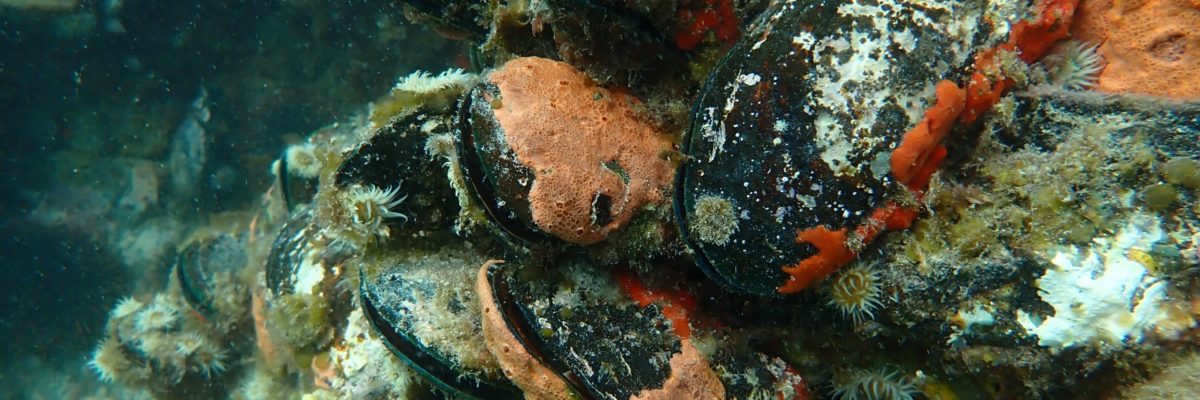
Beneath the surface – what our latest marine survey tells us
In Autumn 2021 Dr Tim Haggitt conducted a subtidal biological survey around The Noises Islands. This marked the second formal subtidal ecological survey since the preparation of Sea Change Tai Timu Tai Pari. Working with colleagues from Waipapa Taumata Rau/The University of Auckland’s Institute of Marine Science and the Neureuter family, eight carefully chosen sites were again surveyed, this time with the aim of collecting quantitative information on benthic rocky reef habitats and various key species.
Building on the initial 2017 subtidal survey, the purpose of which was predominantly qualitative, the current survey aimed to provide a platform for further information gathering and to set baseline measures to monitor environmental change through space and time. This is especially critical in the context of any marine protection and habitat restoration initiatives being proposed. The information can also be used for relationship building and educational and outreach activities that share a common goal of regeneration, restoration, and protection.
The data collected so far highlight the islands’ importance as a biodiversity hotspot and emphasises its diverse, yet often compromised habitats, and because the survey employed identical methods to other benthic surveys conducted throughout the Hauraki Gulf Marine Park, including at nearby Rakino Island, findings can also be placed within the context of the wider Hauraki Gulf.
Additional aims of the 2021 survey were to gather biological data which can be evaluated against existing Auckland Museum collections from the area, extending beyond the sea, to include a present-day midden excavation on Ōtata Island. The survey will also provide robust methodologies that feed into a holistic monitoring framework aimed at measuring ecological changes in The Noises ecosystem over a 50-year time frame.
Previous intertidal and subtidal investigations confirmed that the islands are regionally significant, encompassing extensive intertidal and subtidal mussel beds, and comprise a tapestry of vital biogenic habitats (habitats produced by or originating from living organisms). These act as ecosystem engineers – important for creating and maintaining the richness of this area – and include macroalgae forests, diverse sessile (immobile) invertebrate communities, rhodolith beds, and large beds of soft sediment bivalves including kua kua/dog cockles and tipa/scallops. Because this array of biogenic habitats occurs over a relatively small geographical area and supports high diversity, The Noises Trust is committed to regular surveys, to determine best practices for protecting such critical ecosystems.
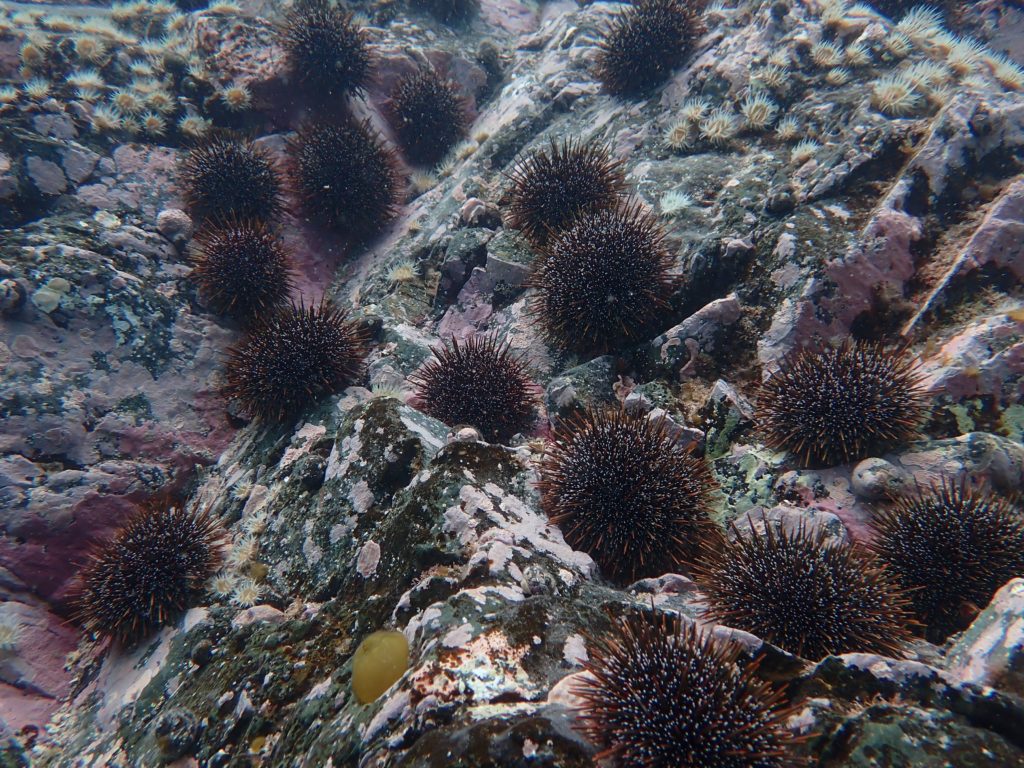
Degradation was apparent across all eight survey sites with clear evidence of sedimentation-related impact, including smothering of macroalage, sponges, and rocky reef habitats. This was particularly conspicuous at depths greater than 10m. There was also a growing presence of kina barrens because, with so few predators such as tāmure/snapper and kōura/crayfish to keep the ecosystem in balance, kina have denuded what were once flourishing kelp forests. This has led to worrying levels of deforestation as well as a disturbing absence of macroalgae relative to historical accounts.
The 2021 study also assessed soft-sediment bivalves (tipa/scallops) and hururoa/horse mussels off Ōtata and Motuhoropapa Islands. Tipa/scallop density has been reduced to worrying low levels with only 31 legal-sized individuals encountered over 1 km2. Overfishing has clearly pushed this population to the brink of collapse and, with scallop season running from September 1 to March 31, every scallop removed from now signals another nail in the coffin for the scallop bed, making it harder and harder for the bed to recover. The survey also noted large numbers of dead hururoa/horse mussels and whilst the causes of mortality are unknown, potential sources include damage by dredges and anchors, sedimentation, and toxic dinoflagellate blooms.
Also disturbing to discover, despite high-quality habitat for kōura/crayfish and extensive searches, only three were observed across the survey sites, and they were all below legal size. Although this is not entirely surprising, bearing in mind kōura are designated ‘functionally extinct’ across much of Tīkapa Moana Te Moananui-ā-Toi, Hauraki Gulf, it is still alarming.
Many commonly targeted species such as tāmure/snapper, kahawai, red moki, and butterfish were observed during the survey, but the majority of tāmure/snapper, butterfish, and red moki were below legal size. Additional surveys using remote video are planned for April 2022 to provide additional information around snapper and blue cod densities.
The findings of this survey as they relate to size, abundance, and diversity paint a disturbing picture of an impacted system with all assessed habitats either directly or indirectly under threat. This has implications for ecological function, resilience, and maintenance of biodiversity, and illustrates the urgent need for protection and restoration.
But it’s not all bad news, and this valuable data, alongside mātauranga Māori from mana whenua, historical findings, and first-hand knowledge gathered by the Neureuter family over many decades, is being used to determine an effective marine protected area for The Noises Islands and their surrounds.
This diverse array of biogenic habitats, combined with existing geological and hydrodynamic settings unequivocally point to a system that can recover substantially if given the chance.
Tihei mauri ora.
Marine surveys are part of a comprehensive ecosystem-based management plan for The Noises environs developed by scientists from Tāmaki Paenga Hira Auckland Museum, Waipapa Taumata Rau The University of Auckland, Massey University and Auckland Council. The work is funded by a Gulf Innovation Fund Together (GIFT) grant. Funding has also been provided by Pew Bertarelli Ocean Legacy and C&L Gregory Charitable Trust. The marine survey report can be found in the publications section of our website.

